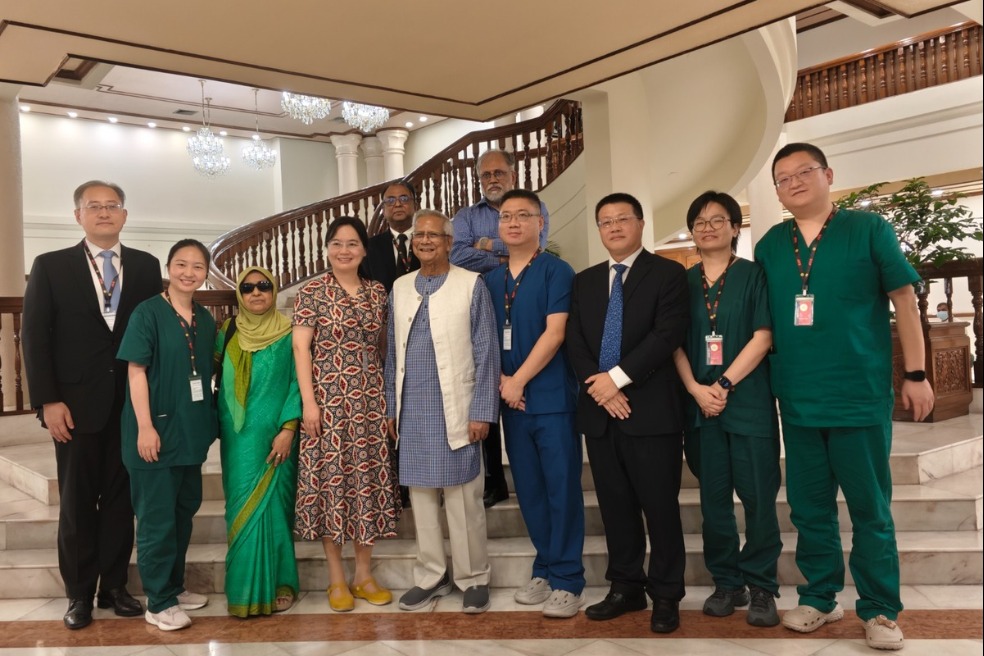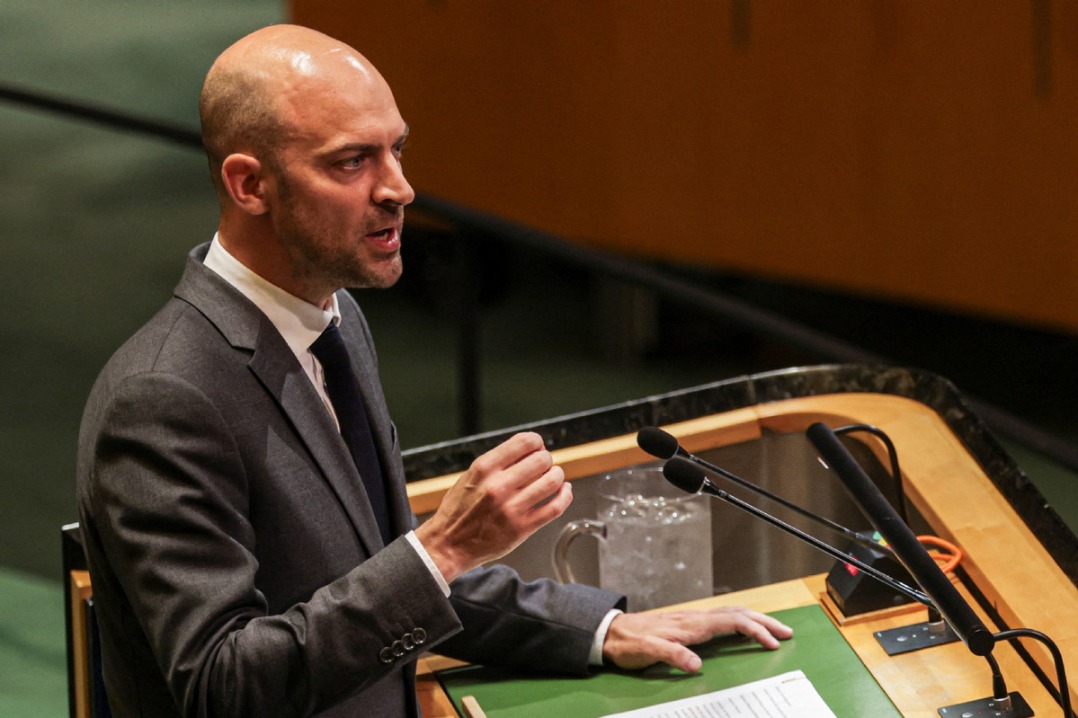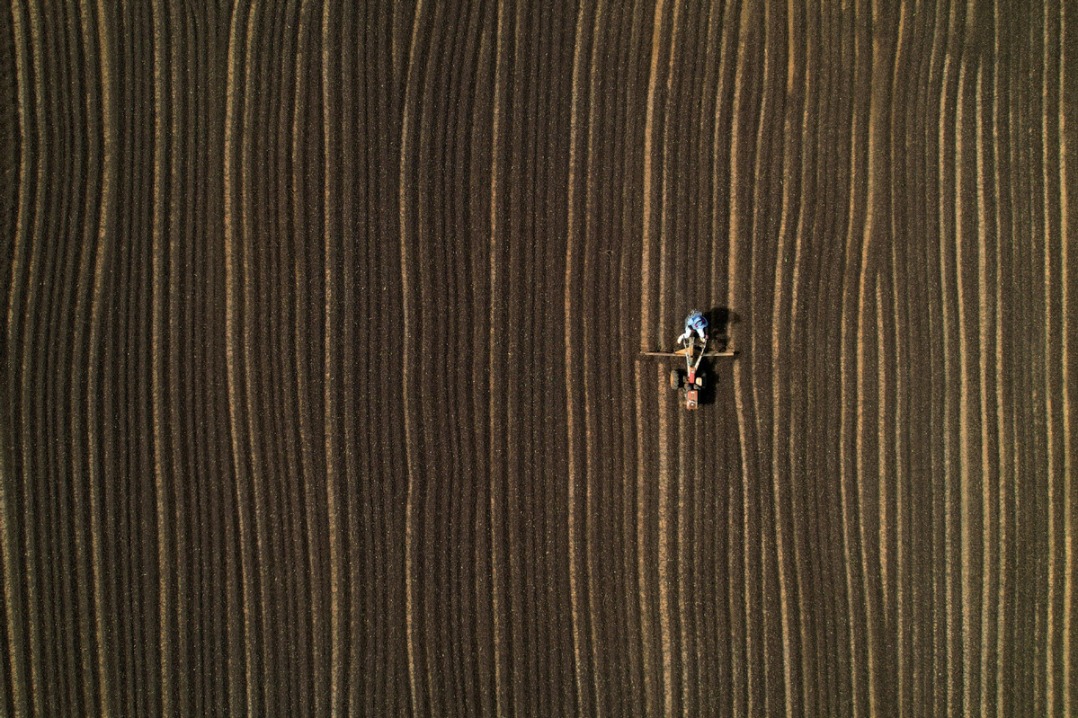Return of relic from US to China a sign of friendship
Relic:?Exchange seen as chance to bolster understanding






A 2,800-year-old Chinese bronze item that had gone missing after being stolen overseas 40 years ago was recently returned to its motherland, in a fresh instance of relic protection cooperation between China and the United States, the National Cultural Heritage Administration announced on Wednesday.
The bronze ritual vessel, named Feng Xingshu Gui, was believed to have been crafted during the last century of the Western Zhou Dynasty (c. 11th century to 771 BC).
The vessel, which is 18 centimeters high and 21 cm in diameter and weighs about 6 kilograms, is composed of a large bowl that has double handles in the design of a coiled-nose animal face and rests on three feet shaped like those of an animal. It also features abstract animal designs and patterns in the shape of eaves tiles.
The treasure was flown from San Francisco and arrived in Beijing on Jan 28, the heritage administration said. A panel of expert appraisers was organized to take a close look at the artifact the next day.
Based on its comprehensive analysis of the vessel's artistic patterns, materials, decorative arts and inscriptions, as well as old photos and historical files that were used for reference, the panel confirmed that the repatriated item was the original Feng Xingshu Gui, a top-level cultural relic of China.
An inscription cast in the interior of the vessel says it was "crafted by Xingshu (a nobleman) of the Feng (vassal) state, dedicated to his wife, Boji, and is a treasure for all his generations to come".
The Western Zhou Dynasty developed the practice of inscribing ritual vessels. The inscriptions were meant to communicate the owners' political and social achievements, for their ancestors and future generations to admire. Historians generally believe that inscriptions are the most striking feature of bronze ware of that time.
Long-lost treasure
In 1978, the bronze vessel was excavated from a cellar in Fufeng county of Baoji, Shaanxi province. It was later housed in a local museum, but on Nov 5, 1984, it was stolen by burglars, and its whereabouts remained unknown.
Since the theft 40 years ago, China had never given up looking for it, said Li Qun, director of the National Cultural Heritage Administration.
Decades later, when Raymond King, an entrepreneur based in Portland in the US state of Oregon, was helping his mother clear out old belongings in her New York apartment, little did they realize that a bronze vessel nestled among other antiques was the long-lost treasure.
However, King discovered its origin last year when he invited a researcher at Sotheby's auction house to look at his mother's collection. The next day he was told the bronze had been stolen from China.
"My grandfather got it from a dealer … and then gave it to my mother," King told China Daily. "We had no idea (when or for how much it was bought), but once we understood it was stolen, my mom's reaction was just, 'Give it back.'"
"Raymond King and his mother resolutely decided to do the right thing. They agreed to unconditionally return the artifact to the Chinese government, an act that is truly admirable," Li said in a video message played at the repatriation ceremony held at the Portland Art Museum in late January.
Also commendable was the international cooperation and a shared appreciation for the cultural heritage, he added.
The London-based Art Loss Register put Feng Xingshu Gui in its own database after Interpol listed it as stolen art in 2017. When the Sotheby's researcher contacted the Art Loss Register about the bronze vessel, the register informed the Chinese embassy in London and was later connected with the office for recovery and restitution of cultural property at the National Cultural Heritage Administration in Beijing.
"The returning of the relic is a key fruit of implementing the consensuses reached by the state leaders of China and the US in San Francisco (in November)," Li said.
He added that the repatriation of Feng Xingshu Gui is an example of different countries taking concerted action to fight the illicit trafficking of cultural property, and it was also an outcome of 15 years of China-US cooperation in cultural heritage protection, fostered by a memorandum of understanding first signed in 2009.
In January, the agreement, renewed in 2014 and 2019, was extended for another five years. It will act as a guideline for US Customs and Border Protection officers to restrict the importing of "archaeological materials representing China's cultural heritage from the Paleolithic period through the end of Tang Dynasty (618-907)".
Between 2009 and 2023, a total of 504 Chinese cultural relics were returned from the US to China on 15 occasions, thanks to bilateral judicial cooperation based on the agreement.
The vessel's journey isn't just about the repatriation, but is also a testament to the power of shared heritage in building bridges between cultures, said Brian Ferriso, director of the Portland Art Museum.
"Culture connects us across time and place. Objects such as this ancient bronze provide a meaningful insight into Chinese culture. And this exchange itself serves as another opportunity to build bridges between China and the United States," he said.
That sentiment resonated with Zhang Jianmin, the Chinese consul-general in San Francisco, who praised the repatriation as an "important achievement of cultural exchanges" between the two nations.
"We will also remember and cherish the friendship of our American friends who have made this return possible," said Zhang, who presented King and his mother with a certificate of donation for their generosity.
For King, the return wasn't a grand gesture, but a simple act of righting a wrong.
"I don't think it's really ours to donate," he told China Daily. "I feel great that it's going to where it belongs. Maybe one day it'd be nice to visit the museum" where the relic will be housed in China.






























